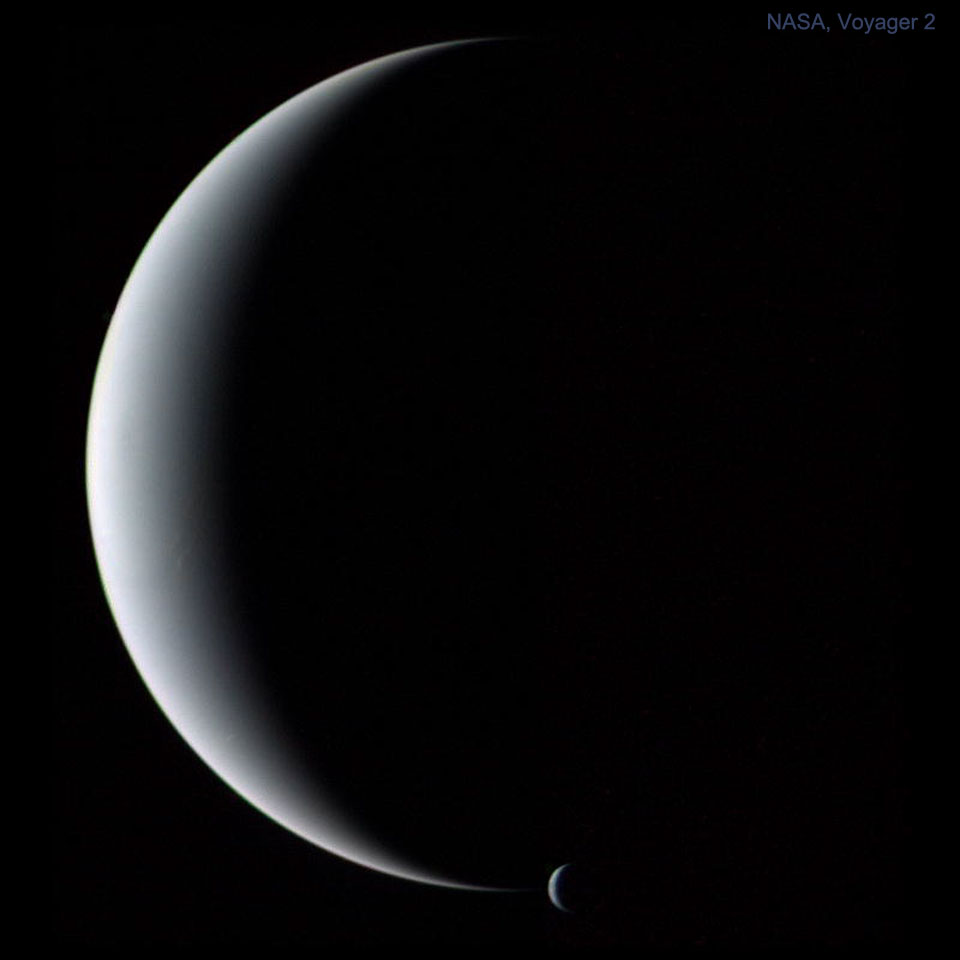蛾眉相的海王星和海卫一
2023年5月27日
Crescent Neptune and Triton
Image Credit: NASA, Voyager 2
Explanation: Gliding through the outer Solar System, in 1989 the Voyager 2 spacecraft looked toward the Sun to find this view of most distant planet Neptune and its moon Triton together in a crescent phase. The elegant image of ice-giant planet and largest moon was taken from behind just after Voyager’s closest approach. It could not have been taken from Earth because the most distant planet never shows a crescent phase to sunward eyes. Heading for the heliopause and beyond, the spacecraft’s parting vantage point also robs Neptune of its familiar blue hue.
Tomorrow’s picture: an unexpected moon
蛾眉相的海王星和海卫一
影像提供: NASA, Voyager 2
说明: 当年在太阳系的外围曳航时,旅行者2号宇宙飞船回首望向太阳,见到了这付海王星和海卫一同时带着蛾眉相的景观。拍摄这幅冰巨行星及最大卫星合影的优雅照片时,旅行者号刚通过最接近海王星的位置,然后旋绕到它们的后方。这是从地球拍不到的海王星影像,因为较近太阳的地球,所见的海王星永远满相。此外,在往日球层顶及其后方飞掠的这艘宇宙飞船所在的道别视角里,海王星熟悉的泛蓝色泽也不再得见。
明日的图片: an unexpected moon

